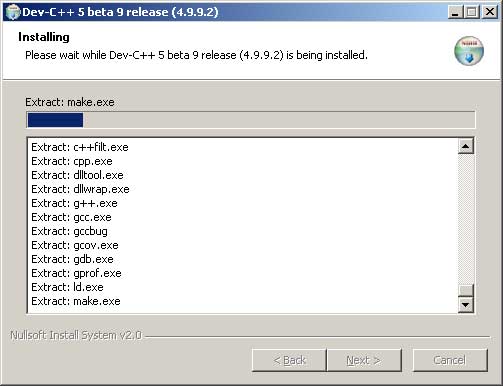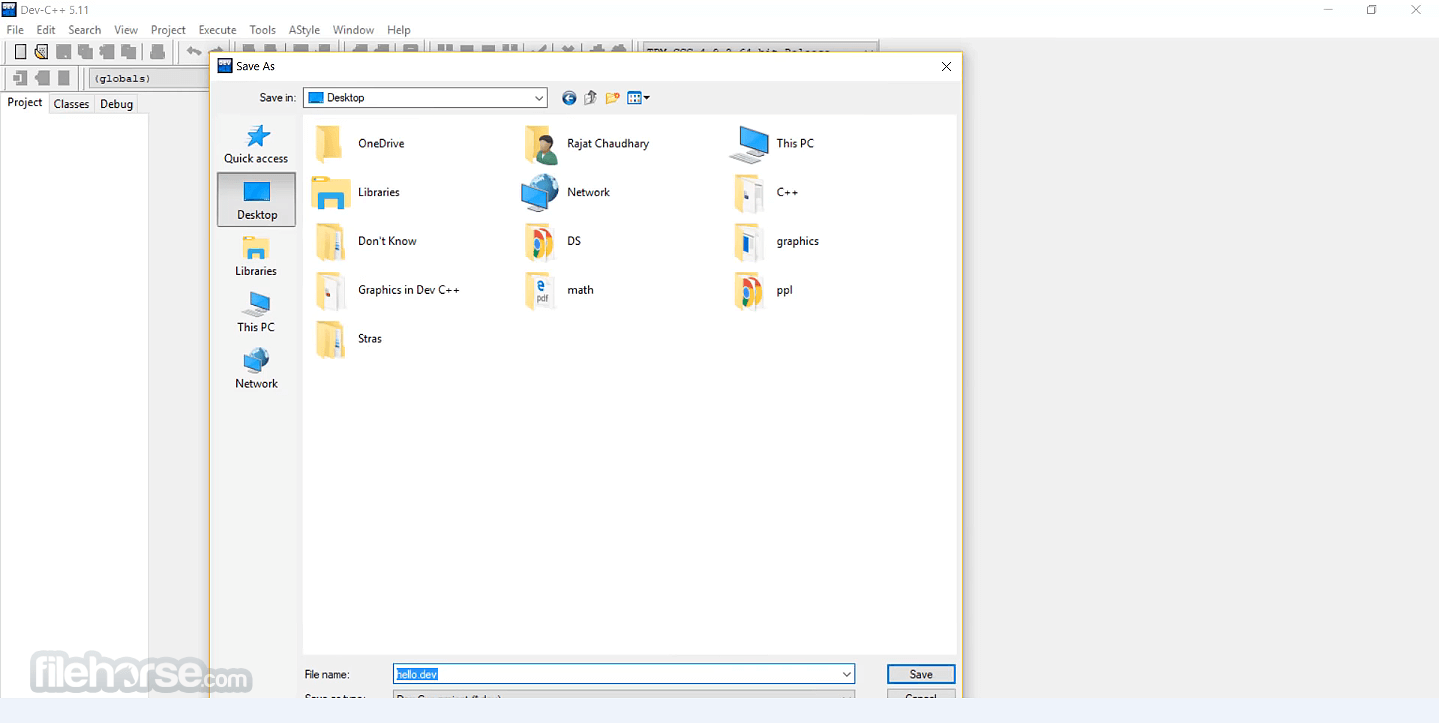Dev-c++ Terms List
C is a case-sensitive programming language. Thus, Manpower and manpower are two different identifiers in C. Here are some examples of acceptable identifiers − mohd zara abc movename a123 myname50 temp j a23b9 retVal C Keywords. The following list. Dev-C can also be used in combination with Cygwin or any other GCC-based compiler. Dev-C is generally considered a Windows-only program, but there are attempts to create a Linux version: header files and path delimiters are switchable between platforms.
- C++ Basics
- C++ Object Oriented
- Tutorials, Free Online Tutorials, sitesbay provides tutorials and interview questions of all technology like java tutorial, android, java frameworks, javascript, ajax, core java, sql, python, php, c language etc. For beginners and professionals.
- Dev-C IDE Project Options Guide. (IDE) for the C/C programming language. It uses Mingw port of GCC (GNU Compiler Collection) as it's compiler. Dev-C can also be used in combination with Cygwin or any other GCC based compiler.' Where you are going to list.
- C++ Advanced
- C++ Useful Resources
- Selected Reading
When we consider a C++ program, it can be defined as a collection of objects that communicate via invoking each other's methods. Let us now briefly look into what a class, object, methods, and instant variables mean.
Object − Objects have states and behaviors. Example: A dog has states - color, name, breed as well as behaviors - wagging, barking, eating. An object is an instance of a class.
Class − A class can be defined as a template/blueprint that describes the behaviors/states that object of its type support.
Methods − A method is basically a behavior. A class can contain many methods. It is in methods where the logics are written, data is manipulated and all the actions are executed.
Instance Variables − Each object has its unique set of instance variables. An object's state is created by the values assigned to these instance variables.
C++ Program Structure
Let us look at a simple code that would print the words Hello World.
Let us look at the various parts of the above program −
The C++ language defines several headers, which contain information that is either necessary or useful to your program. For this program, the header <iostream> is needed.
The line using namespace std; tells the compiler to use the std namespace. Namespaces are a relatively recent addition to C++.
The next line '// main() is where program execution begins.' is a single-line comment available in C++. Single-line comments begin with // and stop at the end of the line.
The line int main() is the main function where program execution begins.
The next line cout << 'Hello World'; causes the message 'Hello World' to be displayed on the screen.
The next line return 0; terminates main( )function and causes it to return the value 0 to the calling process.
Compile and Execute C++ Program
Let's look at how to save the file, compile and run the program. Please follow the steps given below −
Open a text editor and add the code as above.
Save the file as: hello.cpp
Open a command prompt and go to the directory where you saved the file.
Type 'g++ hello.cpp' and press enter to compile your code. If there are no errors in your code the command prompt will take you to the next line and would generate a.out executable file.
Now, type 'a.out' to run your program.
You will be able to see ' Hello World ' printed on the window.
Make sure that g++ is in your path and that you are running it in the directory containing file hello.cpp.
You can compile C/C++ programs using makefile. For more details, you can check our 'Makefile Tutorial'.

Semicolons and Blocks in C++
In C++, the semicolon is a statement terminator. That is, each individual statement must be ended with a semicolon. It indicates the end of one logical entity.
For example, following are three different statements −
A block is a set of logically connected statements that are surrounded by opening and closing braces. For example −
C++ does not recognize the end of the line as a terminator. For this reason, it does not matter where you put a statement in a line. For example −
is the same as
Dev-c Terms List Of Business
C++ Identifiers
A C++ identifier is a name used to identify a variable, function, class, module, or any other user-defined item. An identifier starts with a letter A to Z or a to z or an underscore (_) followed by zero or more letters, underscores, and digits (0 to 9).
C++ does not allow punctuation characters such as @, $, and % within identifiers. C++ is a case-sensitive programming language. Thus, Manpower and manpower are two different identifiers in C++.
Here are some examples of acceptable identifiers −
C++ Keywords
Dev-c Terms List Of Movies
The following list shows the reserved words in C++. These reserved words may not be used as constant or variable or any other identifier names.
| asm | else | new | this |
| auto | enum | operator | throw |
| bool | explicit | private | true |
| break | export | protected | try |
| case | extern | public | typedef |
| catch | false | register | typeid |
| char | float | reinterpret_cast | typename |
| class | for | return | union |
| const | friend | short | unsigned |
| const_cast | goto | signed | using |
| continue | if | sizeof | virtual |
| default | inline | static | void |
| delete | int | static_cast | volatile |
| do | long | struct | wchar_t |
| double | mutable | switch | while |
| dynamic_cast | namespace | template |
Trigraphs
A few characters have an alternative representation, called a trigraph sequence. A trigraph is a three-character sequence that represents a single character and the sequence always starts with two question marks.
Trigraphs are expanded anywhere they appear, including within string literals and character literals, in comments, and in preprocessor directives.
Traktor pro 3 torrent. TRAKTOR PRO 3 sees a series of changes to our audio engine, designed with club- sized sound systems in mind. New Elastique 3 time-stretching, an improved master limiter, and industry-mixer modeling options mean that whatever your style, and whatever you.
Following are most frequently used trigraph sequences −
| Trigraph | Replacement |
|---|---|
| ??= | # |
| ??/ | |
| ??' | ^ |
| ??( | [ |
| ??) | ] |
| ??! | |
| ??< | { |
| ??> | } |
| ??- | ~ |
All the compilers do not support trigraphs and they are not advised to be used because of their confusing nature.
Whitespace in C++
A line containing only whitespace, possibly with a comment, is known as a blank line, and C++ compiler totally ignores it.
Whitespace is the term used in C++ to describe blanks, tabs, newline characters and comments. Whitespace separates one part of a statement from another and enables the compiler to identify where one element in a statement, such as int, ends and the next element begins.

Statement 1
In the above statement there must be at least one whitespace character (usually a space) between int and age for the compiler to be able to distinguish them.
Statement 2
In the above statement 2, no whitespace characters are necessary between fruit and =, or between = and apples, although you are free to include some if you wish for readability purpose.